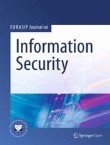IoT cyber risk: a holistic analysis of cyber risk assessment frameworks, risk vectors, and risk ranking process
Security vulnerabilities of the modern Internet of Things (IoT) systems are unique, mainly due to the complexity and heterogeneity of the technology and data. The risks born out of these IoT systems cannot eas...
